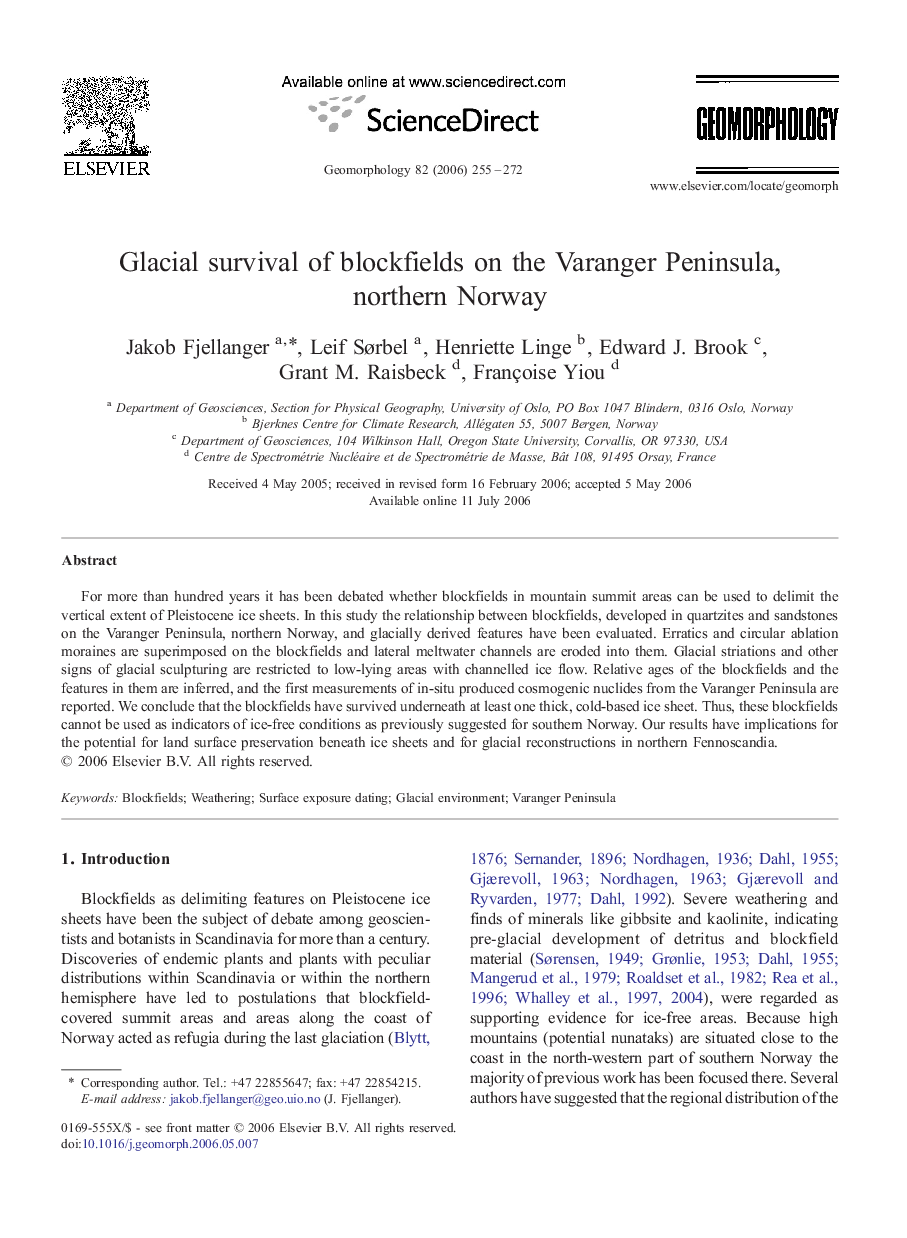| Article ID | Journal | Published Year | Pages | File Type |
|---|---|---|---|---|
| 4687292 | Geomorphology | 2006 | 18 Pages |
For more than hundred years it has been debated whether blockfields in mountain summit areas can be used to delimit the vertical extent of Pleistocene ice sheets. In this study the relationship between blockfields, developed in quartzites and sandstones on the Varanger Peninsula, northern Norway, and glacially derived features have been evaluated. Erratics and circular ablation moraines are superimposed on the blockfields and lateral meltwater channels are eroded into them. Glacial striations and other signs of glacial sculpturing are restricted to low-lying areas with channelled ice flow. Relative ages of the blockfields and the features in them are inferred, and the first measurements of in-situ produced cosmogenic nuclides from the Varanger Peninsula are reported. We conclude that the blockfields have survived underneath at least one thick, cold-based ice sheet. Thus, these blockfields cannot be used as indicators of ice-free conditions as previously suggested for southern Norway. Our results have implications for the potential for land surface preservation beneath ice sheets and for glacial reconstructions in northern Fennoscandia.
